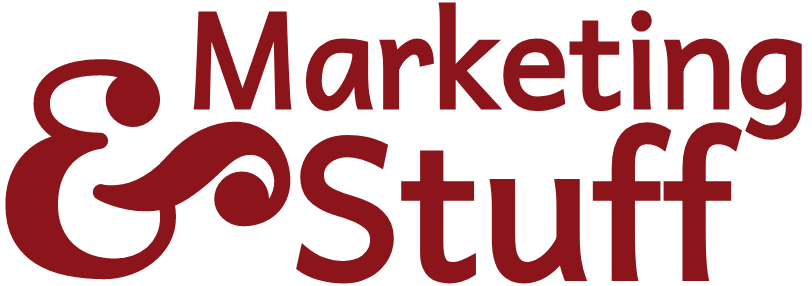It’s never been easier to spread information – just a quick click and a story on Twitter or LinkedIn and is shared with your network. And because there is so much information readily available at any time, it’s actually harder to decide what is true and what isn’t.
Because marketers are often involved in communications, I wanted to look at how information is spread, why certain types of story are so compelling and why we all need to take responsibility in making sure we don’t help to propagate falsehoods.
What is a conspiracy theory – and why do they become so popular?
A conspiracy theory can come from any political persuasion – or can even be anti-political. What they all have in common is a mysterious powerful elite, often hiding in plain sight, that is controlling major events in the world.
They have a strong, usually polarising narrative structure and split the world in to ‘us’ and ‘them’. In this narrative, ‘we’ are the downtrodden underdogs who have finally found the key to our salvation (ie we have discovered the conspiracy) and ‘them’ – the clear villains of the piece who have finally been discovered.
The BBC’s Infinite Monkey Cage devoted an episode to exploring conspiracy theories on 10th December 2022. You can access it here.
There are two reasons that conspiracy theories are so rife now, according to the episode. Firstly, there’s a general mistrust of experts, driven by the fact that it’s never been easier to find out information quickly and easily thanks to the Internet. Secondly, conspiracy theories are comforting because they provide a structure and narrative behind otherwise random events. In troubled times having someone to blame can help people feel as if they have some control over their situation.
There is a third part to why conspiracy theories are spreading so quickly and that’s because of social media. It’s never been easier to spread information between your immediate contacts and then outwards beyond your social group to complete strangers. Not only does this mean that the world has become a much smaller place, it also means that misinformation spreads more quickly.
What is the difference between misinformation, disinformation and mal-information?
Misinformation, disinformation and mal-information are not the same as conspiracy theories, although conspiracy theories will all contain elements of at least one of these types of ‘fake news’.
Disinformation is the most pernicious of the three: it’s not only false but is deliberately spread as part of a concerted campaign in order to do harm.
Mal-information is factually correct but exposed with the intention of doing harm. It’s a way of weaponizing the truth either by timing its release or by using omissions or making some alternation to ensure its effect is as damaging as possible.
Misinformation are false facts, but which are spread innocently – by mistake rather than with the intention of doing harm.
The reason it’s important to be aware of these different types of false facts is summed up well by David Ormand in How Spies Think:
Be aware that those seeking to deceive us know that the most effective ‘fake news’ will be false information that we are likely to think could be (and should be) true.
During second world war, ‘Lord Haw Haw’ broadcast German propaganda to the UK and the shows were very popular, with up to 50% of the listening public tuning in each day. The content was a mix of disinformation and mal-information – cleverly combined with comedic elements to give it a mass appeal.
As a contributor to the mass observation diaries at the time put it: ‘He sounds such a nice man. It makes you think there must be something in what he says.’ Another contributor commented: ‘He talks a lot of cock and 75% of his statements are either lies or propaganda, but occasionally he hits the nail on the head. It’s then that he makes you think. You wonder whether a lot of his statements are also true.’ https://www.iwm.org.uk/history/the-rise-and-fall-of-lord-haw-haw-during-the-second-world-war
Although they are talking about a radio broadcast from over 70 years ago, the same sentiments could be applied to any number of podcasts, websites or social media influencers today.
Flooded with information: how do you decide what to trust?
Early in the 2020 pandemic I was so overwhelmed with conflicting opinions and facts from all sorts of experts (including armchair experts) that I found myself not wanting to believe anything I hadn’t had first-hand experience of myself.
This nihilistic state of mind was not great because refusing to believe anything is worse than believing – in good faith – something that might turn out not to be true.
Rather than rejecting or accepting what you read or hear out of hand based on gut feeling, a better way to handle the flood of information is to take an objectively critical stance and ask yourself some questions about what you have been told. Even if you fully agree with what you’ve heard and really want it to be true it’s still important to take a step back. Ask:
- What is the source of the information? Is it from a reputable, trustworthy source – or is it word of mouth passed on from somebody’s uncle’s friend? Although there is a trend to discount ‘experts’ a professional who has published something is staking their reputation and livelihood on it. Dave from the pub is not.
- What is the agenda of the source? Even professionals have biases so understanding more about the overall agenda of the person or organisation that the information comes from helps you to make a more rounded judgement on it.
Most importantly, don’t like and share something on social media if you think it might be false. Spreading misinformation or disinformation can do people real harm.
Useful fact-checking sites
There are a number of fact-checking sites which are dedicated to researching and either corroborating or negating some stories doing the rounds on social media. Here are two examples:
- Fullfact.org is a UK-based team of independent fact check.
- Factcheck.afp.com is run by Agence France-Presse, a French international news agency headquartered in Paris.
Both of these organisations receive money from organisations such as Facebook – and so are open to accusations of bias too. The website Media Bias/Fact Check lists thousands of media sources and their biases which can further help you make up your own mind about how much credence you give to a particular story.
You can’t win an argument with a conspiracy theorist
And finally, there is little point in arguing with or trying to persuade a conspiracy theorist. For a start, any facts you share which disprove the conspiracy are easily dismissed disinformation spread by ‘Them’ (which ever group of shadowy conspirators are the arch enemy).
What makes a change of mind even harder is that believers in conspiracies often make that belief a central part of their identity. Not only will you be asking them to admit they are wrong (which is also something most people find very difficult to do) they will also have to accept that their own identity is to be questioned and they may even face rejection by the people in their group.
In his book, How Minds Change, David McRaney explores why people are so keen to believe and why it’s so difficult to change these beliefs. If you are interested in psychology, it’s definitely worth a read.

